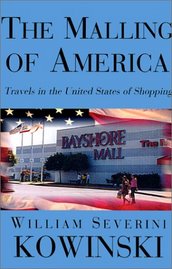So on the morning of June 25, Cheryl Seidner got ready. She brought a ceremonial basket cap and buckskin shawl to wear, both of them designed and made for her by her sister, Leona Wilkinson. She wore two necklaces. One was made from abalone beads belonging to her grandmother, Hazel James. The other had been made for her several years earlier by Eureka school children. Later she would wear one more-a large dentilium necklace with cobalt blue beads given to the Wiyot tribe that day by the Elk Valley reservation.
Julian Lang (Karuk, whose great great grandmother was Wiyot) took on the challenge of developing a meaningful Native component for the transfer event, to be held at the Adorni Center on the Eureka waterfront.
He began with the idea of something based on a traditional boat dance. "Not really a boat dance," he said, "but as a model from within our Native cultures that we could use for this event." The crossing of the waters is a journey to the afterlife, and so it links the present and people today with the past and the ancestors on Indian Island. It could also suggest a journey to unity among Native peoples, and reconciliation of all peoples. "It's symbolic, based on our cultural knowledge."
Julian began by approaching Walt Lara (Yurok) with the idea. " He said, 'count me in. It's really important, and an Indian presence is incredibly important in this case, especially because we are the dancemaker families, the dancemaker people within our Indian community, and it's our job.' He made it a possibility."
Walt Lara would bring the redwood canoe made in the late 1990s, with a grant from the Seventh Generation Fund. Julian hoped for a total of five canoes, including the oldest to still be in use, but most of them were damaged, being repaired or couldn't be properly prepared in time. Richard Myers (Yurok) volunteered a smaller dugout canoe, and the Yurok tribe provided their water marshal boat as an escort. "But ten boats or two boats, it doesn't matter," Julian said. "It's the same thing. It's the way our ceremonies work."
Julian consulted others about various elements of the event. "We reached out to include many ceremonial folks from all the tribes, because we are related not by blood but by ceremony. They were inspiring at every stage. Everybody recognized the significance of the event---not as a civic or government to government event, but as a Native American event, bringing together the past and the present in healing. As it got closer, I realized these people were really important people who made it an incredibly big event, full of meaning. It just blossomed. It said, this is who we are today."
Cheryl agreed. "It needed to have something to do with who we are, where we are coming from, and what we plan to be doing with our lives from that point forward."
Most who became involved were present on Indian Island that morning. After the television crew and reporter from the Associated Press were gone, they gathered for prayer. Then for the first time in 144 years, two redwood canoes left Indian Island. In the larger boat with Cheryl was Walt Lara and his grandson, Walt Lara III, Chris Peters (Pohlik-lah/Karuk), Jessie Sherman (Hupa, Wiyot) and Thomas Wilkinson (Wiyot.) In the smaller boat were Frank Myers, Julian Lang, Skip Lowry(Yurok, Pitt River) and Frank Tuttle (Yuki/Wailaki/Konkow Maidu, who supplied much of the regalia).
Origins: Winter Solstice
-
The Winter Solstice is considered the most celebrated annual event in the
history of human cultures around the world. Ancient structures survive in
m...
23 hours ago



No comments:
Post a Comment